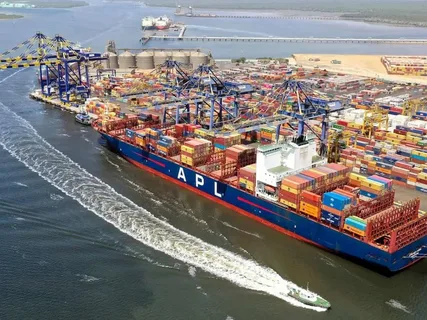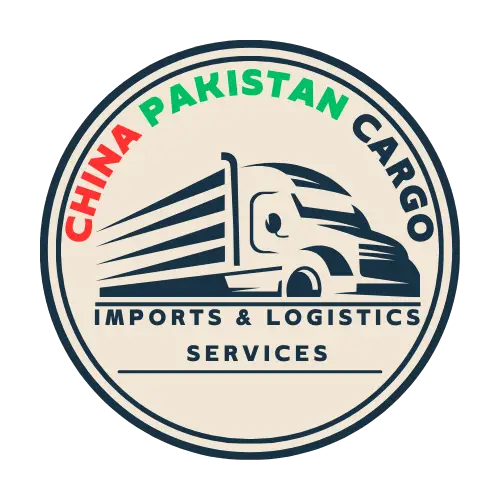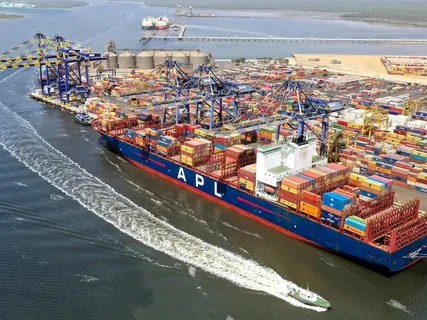
Pakistan is entering a new phase of maritime expansion as Port Qasim is being transformed into a full-fledged maritime industrial hub, unlocking modern ship-repair, recycling, logistics and trade infrastructure. With this upgrade, the country signals its ambition to lead regional value-chains, reduce import dependency, and strengthen its position in the global supply network. For companies moving freight between China and Pakistan, including consolidations and import flows, this development opens fresh possibilities. At China Pakistan Cargo, we’re tracking how this shift will reshape transit options, landed cost and supply-chain resilience.
What’s changing: key developments and timelines
- Nov 3, 2025 — The federal maritime authority announced that Port Qasim will undergo major modernisation, aiming to contribute at least half of Pakistan’s $100 billion annual trade-revenue target. The port was recognised as the world’s ninth-most improved container port, with an efficiency score improvement of 35.2 points, driven by digitalisation, faster berth operations and reduced dwell times.
- Green Maritime Industrial Corridor — A flagship investment of around $13 billion will link port operations, ship-recycling, steel production and logistics under a “Sea-to-Steel” paradigm. An Integrated Maritime Industrial Complex (IMIC) will be developed to merge ship repair, ship-breaking and material-processing capabilities within the port’s footprint.
- Major land allocation & investment interest — Earlier in 2025, a 1,000-acre parcel near Port Qasim was offered for a Chinese-backed maritime industrial park, combining ship-building, recycling and value-added manufacturing. That investment reinforces the strategic role of the port in Sino-Pak trade cooperation.
- Infrastructure & terminal upgrades — New multi-purpose and container terminals, expanded dredging, “Green Port” technologies, and a Special Economic Zone (SEZ) dedicated to maritime-industrial manufacturing are all in motion. Integrations with upgraded road, rail and digital networks are expected to reduce logistics cost for trade flows.
- Fleet and trade-flow implications — With Port Qasim handling more than 35 % of Pakistan’s seaborne trade, the expansion will bring increased throughput, improved turn-times, and more reliable gateway options for goods arriving from China, Southeast Asia and beyond.
Why this matters for supply chains and trade
- Faster gateway, diversified routes: As Port Qasim scales its industrial and trade ecosystem, importers and exporters gain a more advanced gateway option, reducing reliance on older ports and enhancing schedule reliability.
- Lower landed cost potential: The linkage between port operations and material processing (ship-recycling, steel manufacturing) means domestic value-addition increases. For buyers sourcing via China, improved regional logistics through Pakistan may translate to cost advantages.
- China-Pakistan corridor advantage: Through ChinaPakistanCargo.com, clients moving freight from China (e.g., Shenzhen/Guangzhou/Hong Kong) into Pakistan (Karachi/Port Qasim) can leverage the evolving port infrastructure to:
- Unlock more consistent consolidation options
- Book earlier with confidence thanks to improved capacity
- Tap new efficient hand-over nodes as the port’s logistics ecosystem strengthens
- Mitigation of capacity-risk: In global supply chains, capacity constraints and port bottlenecks cause delays or cost spikes. As Port Qasim modernises, companies booking regional trades will gain a buffer—having access to upgraded terminals and industrial logistics helps absorb shocks.
- Trade-ecosystem effect: The move toward a maritime-industrial hub means upstream and downstream manufacturers, steel mills, ship-repair yards and logistics service providers all co-locate. That cluster dynamic improves hand-off times, drives innovation and strengthens the broader air freight and sea-freight market.
Implications for shipping strategies
Book with confidence for medium-term slots: With Port Qasim’s upgrade underway, reserve slots early for Q1–Q2 2026 to lock in rates and hand-over windows.
Align carton size & staging with new infrastructure: As the port’s industrial zone ramps up, optimizing your packaging and staging for faster turn-times and fewer touches supports shelf-ready arrival.
Mix modal strategy wisely: Combining sea freight into the improved Port Qasim gateway with regional air uplift (as needed) gives an agile supply-chain buffer while the hub upgrades finalise.
Use ChinaPakistanCargo.com for integrated routing: Its China → Pakistan trade lane expertise offers you consolidated bookings, route diversification, and on-ground insight as Port Qasim evolves.
Monitor infrastructure commissioning: As terminals and logistic zones come live, shifting to improved gateway windows may yield better rates and lower risk of delay.
Forecast for next 12-18 months
- 2026: Expect Port Qasim’s upgraded terminals to begin volume ramp-up. Throughput likely to increase 20-30 % on key lanes.
- 2026–2027: The Green Maritime Industrial Corridor infrastructure should begin operations; downstream benefits such as local steel re-rolling and ship-repair should enhance landed-cost options from Pakistan.
- Beyond: As the maritime-industrial ecosystem matures, Pakistan may become a regional manufacturing and logistics hub, making the China ↔ Pakistan corridor not just import-trade but export-driven.
Final word
The transformation of Port Qasim into a maritime industrial hub is more than infrastructure; it’s a strategic pivot in the global supply-chain map of South Asia. For firms engaged in China → Pakistan shipping, this evolution offers improved gateway access, better reliability, and stronger connections to manufacturing clusters. With guidance and consolidation services from the team at ChinaPakistanCargo.com, you can align your bookings today—optimising cost, schedule and service quality ahead of the full hub-ramp-up.
Frequently Asked Questions
What is the Port Qasim Maritime-Industrial Hub plan?
Pakistan, in partnership with China, is developing an integrated maritime‐industrial complex at Port Qasim. The plan includes ship-building, ship-recycling, steel production (“Sea-to-Steel” Green Maritime Corridor), and large-scale industrial zones near the port.
Why is this hub important for Pakistan’s trade and industry?
The hub aims to transform Port Qasim from purely a cargo terminal into a full industrial ecosystem. It would help Pakistan reduce imports of steel and ship-parts, generate employment, attract foreign investment, and position the country as a regional maritime trade gateway.
What scale of investment and land allocation is involved?
Pakistan plans to allocate 1,000 acres of land near Port Qasim to Chinese investors for the hub. The project involves major investment and advanced technologies in shipbuilding, recycling and logistics.
Are there challenges or risks associated with the hub plan?
Yes — key risks include regulatory and environmental compliance (especially ship-recycling hazards), land/infrastructure readiness, over-dependence on one investor or country, and fiscal or governance context in Pakistan. Successful execution will require strong oversight and coordination.

